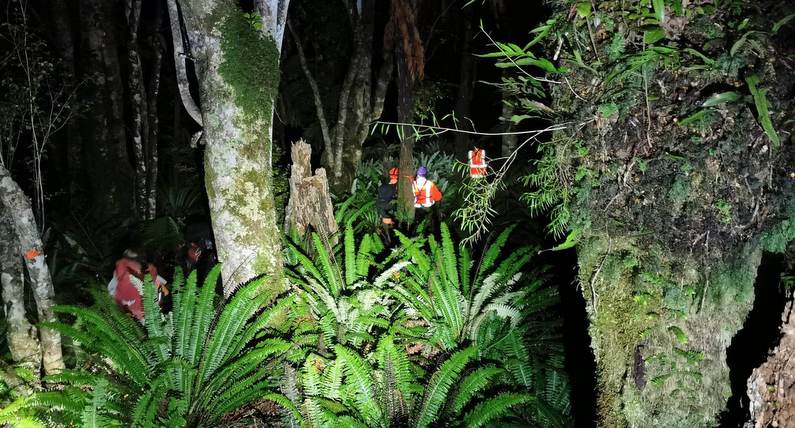
SAR Insights: Time to review your comms plan?
Around 8pm on Saturday 29 April 2023, a tramper activated his personal locator beacon (PLB) near Lake Hauroko in Fiordland National Park, triggering a search and rescue operation.
Amateur Radio Emergency Communications (AREC) volunteer Daniel Erickson heard the radio calls made by Southern Lakes Helicopters as they began deploying. “Amateur radio enthusiasts enjoy listening in on what is happening,” says Daniel. “Having that interest means we’ve got the equipment and technical skills to assist in SAR operations as AREC volunteers.”
The helicopter crew could not locate the man because the beacon had been damaged and the homing signal wasn’t transmitting properly. The crew reported back to the Rescue Coordination Centre New Zealand, requesting support from a Land Search and Rescue team. Police became involved and Daniel’s AREC group was tasked to assist.
The Land Search and Rescue team deployed to Teal Bay Hut via helicopter and began a search at the last position received from the PLB. Around 3am, the tramper was located, cold and dehydrated but otherwise uninjured. He was unable to be winched due to the rough terrain and dense vegetation, so an on-scene assessment was conducted before the man was assisted to Teal Bay Hut and evacuated by helicopter.
A number of agencies operate radio repeaters around New Zealand. Many have granted permission for SAR agencies to use their repeaters during SAROPS.
“In the past, we’ve used the Department of Conservation repeater near Lake Hauroko,” says Daniel. “This repeater had been moved recently and we weren’t sure of the impact on VHF radio communications. We did consider deploying a portable repeater, but the urgency of the operation meant it wasn’t an initial priority. In hindsight, perhaps we’d all become used to good radio coverage in the past.” The field team’s primary VHF radios weren’t effective in reaching back to the Incident Management Team. Their alternative method, a satellite phone, struggled to connect during the operation. In hindsight, longer-range antennas for the VHF hand-held radios could have been taken to improve the primary communication method, or perhaps long-range HF radio sets used as the alternative method.
"When the repeater moved, we should have re-analysed the theoretical coverage and reviewed our SAR communications plans," says Daniel.
Using their contingency communications method, the rescue team on the ground were able to relay information via the Southern Lakes Helicopter. Also, some VHF radio coverage was eventually gained at Teal Bay Hut. After the operation, refresher training sessions on alternate radio communication methods were organised and communications plans were reviewed.
Insight summaries
Any changes to fixed repeaters should trigger a review of communications plans for the impacted area.
Land Search and Rescue follows the PACE approach to communications in the field. In this example the field team had primary (VHF), alternative (satellite phone), contingency (via helicopter) and emergency (Personal Locator Beacon) communication methods. Applying PACE allowed them to operate, despite degraded primary and alternate connectivity.
Regular training with alternative devices ensures people are familiar with the devices, meaning they are more likely to take them on operations.
This story was originally published in the December 2023 issue of Link magazine.
Feature image: Field team searching near the missing person's last known point. Courtesy Dave Fenton
